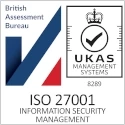15
+
YEARS OF
EXPERIENCE
1000
+
SUCCESSFUL
Projects
80
+
Satisfied
Clients

As businesses adopt more digital tools and move toward hybrid work models, securing network access becomes a top priority. Wi-Fi Entra ID authentication, a modern identity management solution by Microsoft, is helping organizations streamline network security while enhancing user experience. This advanced authentication method integrates with Microsoft Entra Identity, enabling organizations to simplify the way they manage and authenticate users connecting to corporate Wi-Fi networks.
What is Wi-Fi Entra ID Authentication?
Wi-Fi Entra ID authentication is a cloud-based identity solution that leverages Microsoft Entra Identity, previously known as Azure Active Directory (Azure AD), to authenticate users and devices before granting them access to corporate Wi-Fi networks. With Entra ID, organizations can manage user identities, enforce security policies, and streamline access controls for both employees and devices on Wi-Fi networks.
This solution integrates directly with existing Wi-Fi infrastructure, ensuring that access is granted based on the user’s credentials, role, or group membership within the organization. By using Entra ID for Wi-Fi authentication, businesses eliminate the need for legacy authentication methods like RADIUS or WPA2-Enterprise, simplifying management and improving security.





How Wi-Fi Entra ID Authentication Works
Wi-Fi Entra ID authentication works by integrating with Wi-Fi Access Points (APs), Microsoft Entra, and 802.1X protocols, which are standard for secure Wi-Fi network access. Here’s a step-by-step breakdown of how the authentication process works:
1. User or Device Attempts to Connect
When a user or device attempts to connect to a corporate Wi-Fi network, the Wi-Fi Access Point triggers an authentication request using the 802.1X protocol. This protocol ensures that the connection is secure and that only authorized users or devices are allowed to join the network.
2. Access Point Forwards Request to Entra ID
Instead of relying on traditional authentication methods like RADIUS, the access point communicates directly with Microsoft Entra ID (Azure AD). The system checks the user’s or device’s identity against the cloud directory.
3. Authentication and Access Control
Entra ID uses the user’s credentials (such as their username, password, or multi-factor authentication token) to validate the request. It then checks the user’s role, group membership, and any conditional access policies set by the organization. For example, you could have specific rules that only allow certain users, like those in the “Sales” group, to access Wi-Fi in specific locations or during certain hours.
4. Access is Granted or Denied
Based on the results of the authentication check, Entra ID either grants access or denies the request. If the user or device meets the required security and policy conditions, the access point grants them access to the network. If they do not, access is denied, and the user is prompted to correct any issues (e.g., update credentials, pass multi-factor authentication).
Network and Connectivity
Reliable network and connectivity solutions to ensure seamless communication, secure data transfer, and optimized performance.Meraki Office Designs
Meraki office network designs for streamlined, secure connectivity with easy management and powerful, scalable solutions.Network Maintenance
Proactive network maintenance services to prevent downtime, enhance performance, and ensure secure, reliable connectivity.
Key Benefits of Wi-Fi Entra ID Authentication
1. Simplified User Experience
One of the most significant advantages of Wi-Fi Entra ID authentication is the seamless user experience. Employees can use their existing Microsoft Entra ID credentials (typically their corporate email and password) to authenticate to Wi-Fi networks. This eliminates the need for remembering additional Wi-Fi passwords or dealing with complicated setup procedures. Additionally, users can leverage single sign-on (SSO), where they can use the same credentials to authenticate across all corporate systems, including Wi-Fi, applications, and more.
2. Stronger Security with Conditional Access
Wi-Fi Entra ID authentication allows businesses to implement conditional access policies, ensuring that only compliant devices or users can connect to the network. For instance, businesses can enforce that only devices with the latest security updates or devices that meet specific compliance standards can access the corporate Wi-Fi.
By leveraging multi-factor authentication (MFA) and device compliance checks, organizations add additional layers of security to prevent unauthorized access to sensitive resources. This is especially valuable in remote or hybrid work environments where employees may access corporate networks from various locations and devices.
3. Centralized Identity Management
Entra ID authentication centralizes identity management across all access points, devices, and applications. IT teams can manage all user accounts, roles, and policies from a single cloud-based platform. This simplifies network administration and reduces the risk of configuration errors or security gaps.
Changes in the Entra ID (like password updates, account locking, or changes in user roles) are automatically synchronized with network access, ensuring that users can only access resources that are appropriate to their current role or status within the organization.
4. Improved Scalability
Wi-Fi Entra ID authentication scales effortlessly as organizations grow. Whether you’re adding a new office location or incorporating thousands of remote workers, Entra ID ensures consistent and secure network access without requiring additional on-site infrastructure. Businesses can expand network access policies to include users from various regions, departments, or even external contractors, all while maintaining centralized control.
The cloud-based nature of Entra ID means that the solution doesn’t rely on on-premises servers, making it easier to manage large and dispersed networks without complex hardware requirements.
5. Streamlined Network Management
Merely managing Wi-Fi network access can be a cumbersome task, especially when dealing with various authentication systems, policies, and hardware. With Wi-Fi Entra ID authentication, network administrators can manage all Wi-Fi network policies, security protocols, and user access from a unified dashboard. Microsoft Entra’s integration with network management platforms provides deep visibility into network usage, authentication failures, and potential security threats.
Using tools like Azure AD Conditional Access and Azure AD Join, businesses can automate much of the policy enforcement, reducing the administrative overhead and risk of human error.
6. Integration with Other Microsoft 365 Services
Wi-Fi Entra ID authentication integrates seamlessly with other Microsoft 365 services, such as Teams, SharePoint, and OneDrive, providing consistent access policies across all services. This integration helps ensure that the user’s experience is unified, whether they’re accessing Wi-Fi, internal applications, or cloud services.
Conclusion
Wi-Fi Entra ID authentication offers businesses a modern, scalable, and secure solution for managing network access. By integrating Microsoft Entra Identity with Wi-Fi access points, organizations can simplify the authentication process while enhancing security, improving user experience, and streamlining network management. Whether you are securing access for remote workers, managing guest Wi-Fi, or authenticating IoT devices, Entra ID authentication helps ensure that your network is both secure and easily accessible to the right users and devices.
By embracing Wi-Fi Entra ID authentication, businesses can keep their networks protected while providing a seamless, user-friendly experience for their employees and stakeholders.

answer time
satisfaction
score
on initial call
same business
day









